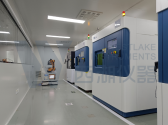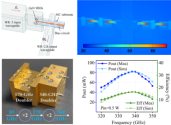West Lake Instruments Product Demonstration Center was completed and put into trial operation
Recently, Westlake Instruments (Hangzhou) Technology Co., Ltd. announced that its product demonstration center has been completed and put into trial operation.

The center is a comprehensive platform integrating an 8-inch SiC laser lift-off automated production line and large-scale SiC substrate processing verification. With the ability to verify cutting-edge technologies and products, it is a key vehicle for advancing laser lift-off technology from "process feasibility" to "mass production usability." This combination of "mass production demonstration" and "cutting-edge verification" enables the center to provide customers with comprehensive support from process introduction to mass production decision-making.
As the core of the product demonstration center, the 8-inch SiC laser lift-off automated production line achieves full automation and unmanned operation from ingot to wafer, making it a powerful industrial tool for meeting current market demands and achieving cost reduction and efficiency improvement. The verification line produces over 20,000 8-inch substrates annually. Its modular design allows for flexible capacity allocation and provides customers with comprehensive, multi-level verification data.
The large-scale SiC laser lift-off process verification line primarily serves new technology and product validation for 12-inch SiC substrates. With an annual production capacity of over 10,000 12-inch substrates, it can also meet the processing needs of various non-standard large-scale seed crystals. Its core mission is to overcome large-scale process challenges, conduct forward-looking technological research and development, and provide technical reserves and solutions for the next generation of large-scale substrate processing.

